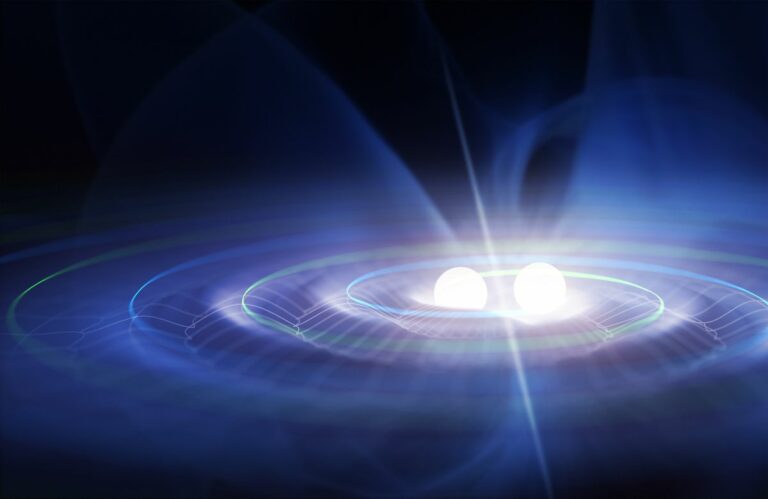Scientists have discovered the first proof of a black hole consuming a neutron star, leading to the creation of ripples in the fabric of space and time.
In the same period as gravitational waves and a neutron star merger were confirmed, scientists have now observed what they think could be the first time black holes are eating neutron stars.
Antennas in Italy and the United States, particularly the LIGO and Virgo gravitational wave detectors, recorded differentiated signals related to an event that occurred 8,550 million trillion km from our planet. astronomers are studying the details of the detection so that they can determine the size of the two objects that collided to produce such large waves, however the common consensus is that a black hole swallowed a neutron star.
‘About 900 million years ago, this black hole devoured a very compact star, a neutron star, as if it was PAC-man, which could have snuffed out the star on the spot,’ said Susan Scott, the head of General Relativity Theory and Data Analysis Group of Australian National University and leader of the ARC Centre of Excellence for Gravitational Wave Discovery. “The ANU SkyMapper Telescope quickly reacted to the detection alert and imaged the whole probable area of the space where the event occurred and still no optical signature was identified. ”Black holes and neutron stars are in fact the remains of dead stars.
Supernovas leave behind neutron stars, which are the tiniest celestial bodies in the entire universe.
Though both are as large as the city of Chicago or Atlanta, they are extremely compact and dense objects, with masses greater than our sun. After the final phase of the life cycle of large stars, it produces the region of increasing gravity, from which even light cannot escape.
Indeed, like other significant discoveries of this decade, this new discovery may offer further important evidence for hitherto unidentified phenomena in space. If this event is true then this will be the first concrete proof that these systems do exist, and that some of them are gradually moving closer to each other and then merging in a crash.
If the neutron star has the same mass as the black hole, then astronomers expect more orbits to bring them closer. This would rip apart the neutron star, making electromagnetic emission, letting scientists know about the character of the star, suggesting its puzzling make up. However, if the masses of the two objects differ, the neutron star will probably be swallowed whole and not emit any radiation.
Since there was no signal in the area where the incident took place, the researchers presume this is what occurred. This means that astronomers want to find out the masses of the two objects. Black hole can be described as an object that has a mass more than five times the mass of the Sun. A neutron star is one that has a mass of less than three times the mass of the sun. Scott pointed out that the smaller one could be very light black hole , which would be tremendous consolation anyway. “We have no information about any black holes in the universe with masses below roughly five times the mass of the Sun, he also said.
“This would create many new questions like ‘how does such a light black hole come about?’”Should the observation of the black hole capturing the neutron star be confirmed, the detectors will have bagged the hat-trick this decade, including gravitational waves and neutron star mergers.
In essence, gravitational waves are disturbances or waves in spacetime. Neutron stars emit gravitational waves and light and heavy materials such as gold.
Astronomers may have likely discovered a neutron star collision with a black hole and two neutron stars and also three possible black hole mergers enabled by the activation of the gravitational wave detectors in April. These observations are waiting for more observations which can support them and then they can become hypotheses.
Further, if these results are confirmed, researchers plan to identify more systems, in which black holes and neutron stars coalexe. The research team would love to give more precise estimate to the number of such systems in the universe as well as gain a better understanding of the formation process of these systems.
They also hope to detect a supernova within the coming years to measure the gravitational waves that occur in the supernova to help in the understanding of the processes involved in supernovas.
Further, the detection teams are working to come up with a method that recognizes the merger of two neutron stars, leading to a temporarily larger neutron star. This neutron star may not be massive for a long time, but any discovery from this event would help astronomers gain more understanding about the effects and make up of neutron star collisions.
Do not forget to share your opinion with us to provide you with the best posts !




0 Comments